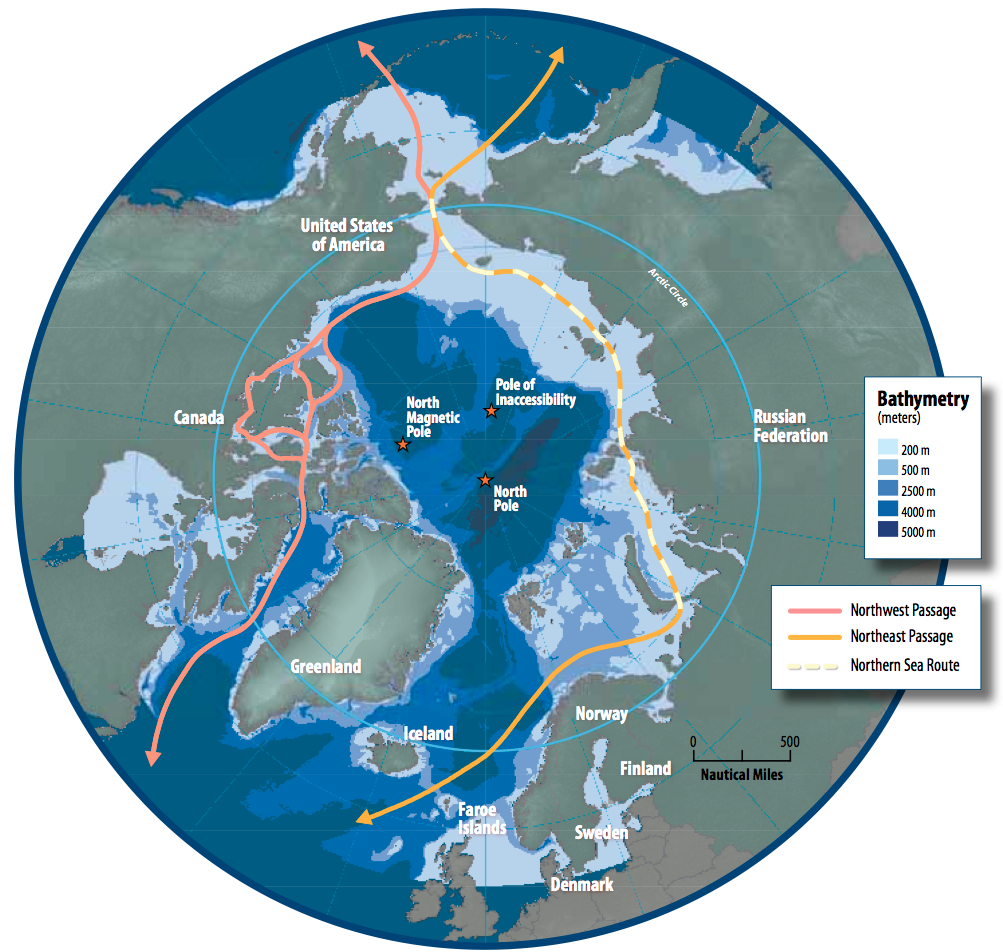Introduction
The economic potential of the Arctic is vast, but the complexities of the region must be considered when analyzing the future of the Arctic. While the region north of the Arctic Circle is commonly viewed as a singular expanse, the reality is rather different. Within the Arctic – and amongst the eight Arctic nations – there exists noteworthy similarities but also tremendous variations. Indeed, the Arctic is a diverse part of the world that would be best characterized as several different subregions, all with unique resources, populations, accessibility, geostrategic importance, and challenges. It is critical to analyze economic drivers and political factors across the High North in order to evaluate the economic potential of the region, understand national security interests, and develop appropriate Arctic policy.
A Challenging Environment
One constant throughout the Arctic region is the hostile climate. Record setting cold, ice-covered waters, rapidly emerging storms, and high winds define the region. The warming trends of the High North, which the National Oceanic and Atmospheric Administration (NOAA) note are about double the rate of global warming trends, are of such a magnitude that the pace of sea ice decline and surface ocean warming is unprecedented. This warming is contributing to an alarming decline in ice coverage at sea and permafrost ashore. The warming trends are forecasted to continue at an increasingly rapid rate due to the albedo effect, making Arctic weather more unpredictable as the likelihood of fog, storms, and even ice floes rises in upcoming years. All Arctic states must confront these challenges and share a common interest in conducting research to better understand the scientific trends that are emerging in the region.
The majority – nearly half – of the Arctic’s four million inhabitants live in the Russian Arctic, with the largest communities located in Murmansk and Norilsk. These cities dwarf the largest comparable North American communities, though population trends indicate a slight shift toward growth in the Alaskan and Canadian Arctic. Yet the Arctic population in total is predicted to experience only a slight upward growth in the upcoming decades, with just a 4 percent growth rate predicted through 2030. When compared with the global growth rate projection of 29 percent over the same period, it becomes clear that the region will not becoming a booming source of labor. Indeed, the Business Index North 2018 report notes that many cities in the Arctic are confronting challenges stemming from the loss of the region’s youth – who move south in search of education and jobs – and a gender imbalance. Further, as the Arctic warms, attracting interest to the region, the indigenous communities are facing new challenges. Thawing permafrost is causing damages to infrastructure as the ground becomes less stable. Developing new infrastructure to support economic development will require innovative approaches in a region not experienced in such issues. The logistical difficulties of transporting building materials and expertise will further compound the issue.
The warming trends, however, will certainly enable further economic activity in the region. Diminishing sea ice coverage is enabling greater maritime traffic. However, it remains unlikely that the northern routes will become competitors of the Suez Canal despite the difference and significantly shorter distance (approximately 4,700nm) from Northern Europe to East Asia that amounts to a decreased transit time of 12 to 15 days if weather conditions cooperate. Yet of the primary identified shipping routes through the Arctic – the Northern Sea Route (NSR), Northwest Passage (NWP), and Transpolar Route (TPR) – only the NSR will have extended periods of opening through approximately 2025...

Map of the Arctic region showing shipping routes Northeast Passage, Northern Sea Route, and Northwest Passage, and bathymetry (Wikimedia Commons)....MUCH MORE
HT: Maritime Executive who feature CIMSEC and who also pointed out on July 6:
Canada Acts on Icebreaker Shortage